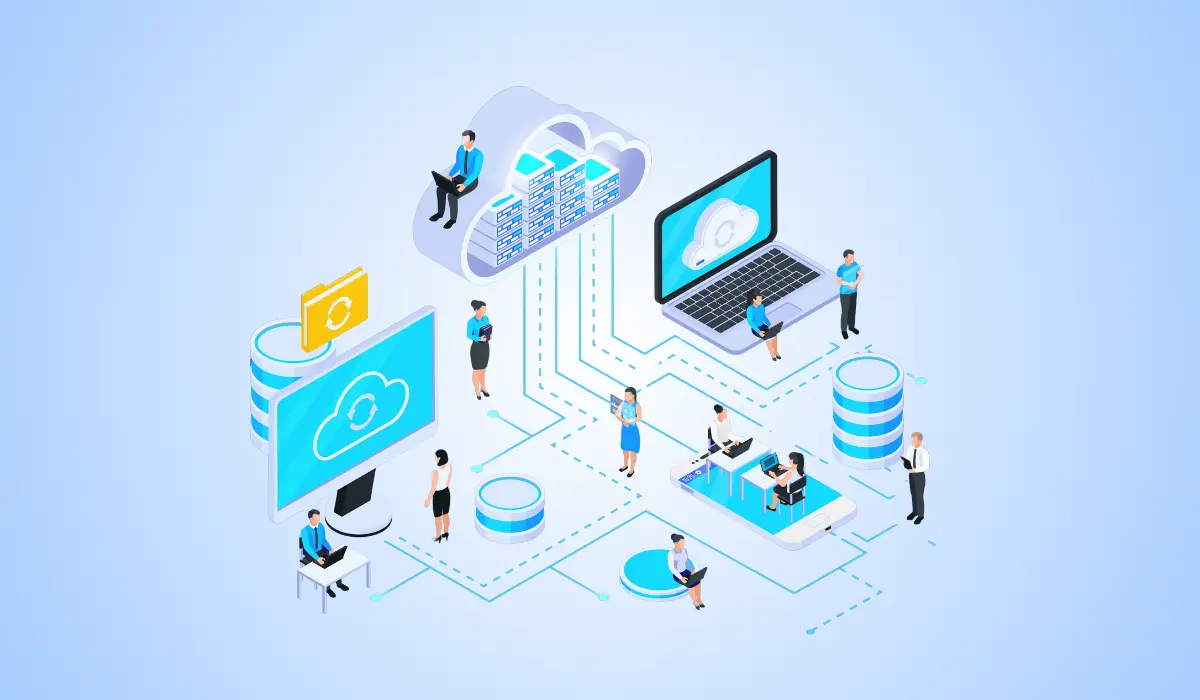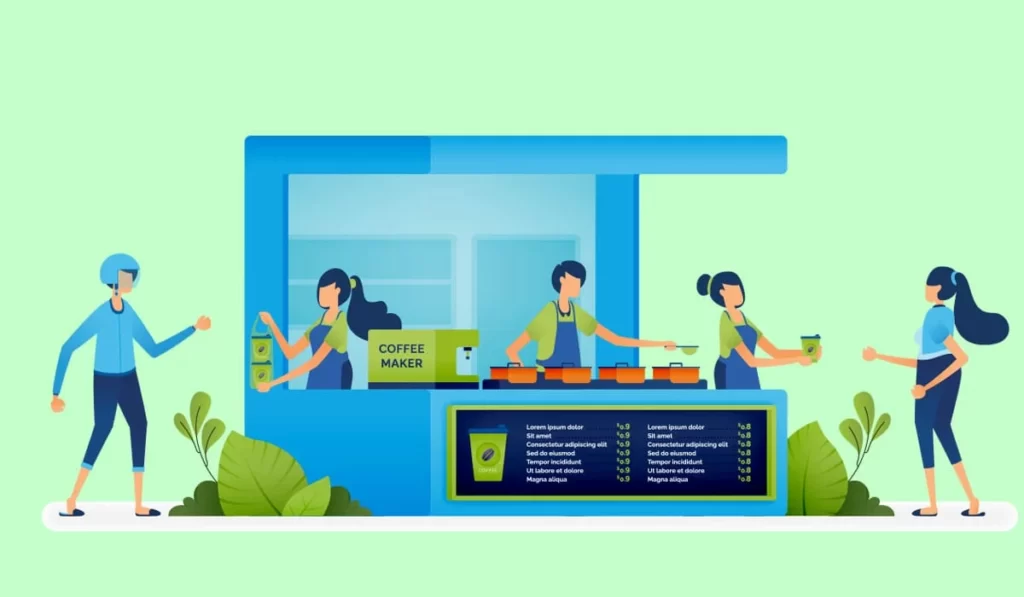The evolution of technology in the restaurant industry has been remarkable, transforming straightforward cash registers into potent operations control hubs.

What are the benefits of a cloud-based HR system?

The evolution of technology in the restaurant industry has been remarkable, transforming straightforward cash registers into potent operations control hubs.
With advancements in technology, restaurants now rely on various areas where technological innovations play a vital role.
Among these, restaurant operations stand out as one of the most crucial aspects empowered by cutting-edge technology.
Restaurant operations encompass a range of essential tasks, beginning with procuring high-quality ingredients from reliable vendors and maintaining optimal kitchen inventory levels to ensure uninterrupted service.
Furthermore, ensuring diligent task performance by all employees is another critical aspect of efficient restaurant operations.
These are just a few examples of the multifaceted responsibilities involved in running a successful restaurant.
Enhancing restaurant performance with technology is important for optimizing operations and achieving operational excellence.
Content Index

Investing in restaurant technology yields a range of advantages:
Following is the list of solutions for enhancing restaurant performance with technology.
Prior to the COVID-19 outbreak, restaurants had already embraced online ordering as a means of streamlining their operations.
However, in light of the rapid digital transformation sweeping the industry, restaurants are now exploring innovative methods to efficiently manage food orders and deliveries using technology.
While third-party platforms like Uber Eats have established themselves as prominent players in the online ordering and delivery sphere, restaurants are increasingly realizing the advantages of implementing unified online ordering solutions that enable customers to directly place delivery or takeout orders with the establishment.
A POS system is a digital solution that enables restaurant proprietors to monitor sales, cash movement, and food inventory.
Nonetheless, an effective restaurant POS system offers more than mere transaction processing and financial record-keeping.
It facilitates seamless communication between the kitchen staff and the serving personnel by receiving orders and transmitting them to the kitchen printer.
Moreover, a POS system proves invaluable in monitoring orders, sales figures, food consumption, and the most sought-after menu items.
By incorporating supplementary integrations, it efficiently streamlines payroll administration and workforce management simultaneously.
There are various types of POS systems. It includes a Desktop POS system, Mobile POS system, Tablet POS system, and Touchscreen terminals.
To decrease costs and minimize food waste, it’s essential to keep an organized record of your restaurant’s ingredients and stock.
Given that food constitutes a significant portion of a restaurant’s inventory and must be utilized promptly, careful attention is required when managing restaurant inventory.
Although spreadsheets and manual counting can be used for inventory management, using inventory management software can streamline the procedure and improve its accuracy.
By utilizing this software, you can gain precise information about the supplies you’ve procured, the items leaving your kitchen, the remaining inventory, your expenditure on supplies, and the quantity of food lost to wastage.
Enhancing restaurant performance with technology has revolutionized the way orders are processed, ensuring greater efficiency and customer satisfaction.
Improving restaurant efficiency through technological advancements is crucial in addressing customer dissatisfaction caused by long waiting periods.
By employing restaurant reservation software, the need for staff to mediate between customers and the reservation process is eliminated.
This software empowers customers to independently view restaurant availability and secure their own reservations.
It also provides realistic wait time predictions, sends SMS notifications when the table is ready, and makes recommendations for the best seating arrangements depending on criteria like time and group size.
Moreover, restaurant personnel can access valuable insights from customer reservations and dining histories, including favorite dishes and significant dates like anniversaries.
At the heart of restaurant industry technology integration lies the restaurant CRM, acting as the central hub.
This customer relationship management tool serves as a means of engaging with guests while effectively capturing and organizing valuable customer information.
By storing details such as contact information, reservation and order history, visit frequency, dietary preferences, birthdays, and numerous other data points, a CRM enables the comprehensive tracking of customer profiles.
Advanced CRM systems enable restaurants to personalize experiences on a broad scale by utilizing this abundance of data, increasing customer loyalty.
The kitchen display system serves as a digital replacement for traditional ticket systems in the back of the house of a restaurant.
As orders are placed through the POS system, they are promptly displayed on a screen within the kitchen.
This innovative KDS technology enhances efficiency and empowers the BOH team by providing visibility into the duration for which each ticket has been open, enabling effective time management and ensuring prompt order fulfillment.
With the KDS, restaurants can optimize their operations and strive for timely delivery of orders, enhancing overall efficiency and customer satisfaction.
Beyond the basic task of creating shift schedules, restaurant employee scheduling software offers a wide range of functionalities.
By leveraging historical data, forecasting techniques, and artificial intelligence (AI), this software automates the scheduling process with exceptional precision.
As a result, it effectively mitigates issues such as understaffing and excessive labor expenses.
Additionally, certain solutions include team communication and timekeeping features, providing comprehensive tools for restaurant owners to streamline employee management.
With this advanced technology, restaurant owners can effortlessly handle employee schedules, and assignments, and stay updated with real-time information.
Online reputation management is the process of monitoring, influencing, and sustaining a favorable view of the restaurant brand across a variety of online platforms while applying technology solutions to improve restaurant operations.
It entails actively managing online reviews, ratings, and consumer feedback using digital tools and techniques.
Restaurants may improve their operations and performance, develop a strong online reputation, and attract more customers by skillfully reacting to customer feedback, resolving issues, and promoting good online interactions.
Technology solutions in the restaurant sector enhance training and staff growth by streamlining the learning process.
Digital tools make it simple to access training materials and resources, enabling staff members to learn at their own pace and convenience.
Their comprehension of tasks and procedures can be improved by interactive modules and simulations.
Real-time feedback and performance tracking are also made possible by technology, which helps managers spot areas for development and offer focused advice.
In general, these solutions expedite training initiatives, support skill development, and give employees the tools they need to improve their skills and knowledge.
The need for online ordering and payment systems for in-person dining has become essential in the restaurant industry.
This technological advancement allows for the creation of a fully digital ordering experience for guests, enabling them to access an online menu and place and pay for their orders seamlessly.
By removing the need for servers to often switch between tables and the POS system to settle the bill, contactless order and pay technology have greatly increased table turnover rates.
Additionally, digital menus give restaurant operators the ability to maximize their profits by upselling consumers and adding extra items to the menu.
In order to fully understand each individual client’s preferences and behavior, the most efficient mobile ordering and payment solutions immediately synchronize with a restaurant’s customer relationship management system and guest profiles.
Implementing technology solutions to increase restaurant operations is pivotal in enhancing restaurant performance with technology.
By embracing digital tools, restaurants can streamline processes, optimize efficiency, and elevate customer experiences.
The technology empowers restaurant owners to increase productivity, reduce errors, and maximize revenue.
Furthermore, advanced analytics and real-time data enable informed decision-making and personalized customer interactions.
By leveraging the power of technology, restaurants can stay ahead of the competition, improve operational performance, and ultimately provide a seamless dining experience that enhances overall restaurant performance.
Great! What’s the single biggest challenge you’d like a software solution to solve for your business? 🎯
💡 Suggested Solution Ideas:
Just one more step! Share your details so our experts can connect with you personally and discuss tailored solutions. 🤝
Thank You for Connecting! 🎉
We've received your information and a specialist will be in touch with you very shortly to discuss how we can help your business thrive.
In the meantime, feel free to browse our resources or reach out if you have immediate questions.
Understood! 🙏
No worries if you're not exploring software solutions right now. Our door is always open if your needs change!
Feel free to explore our other offerings or connect with us anytime.